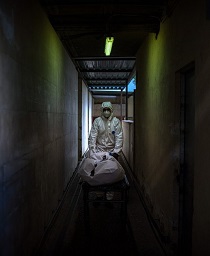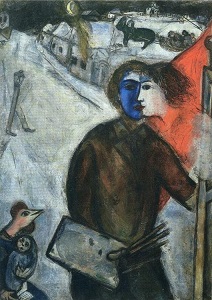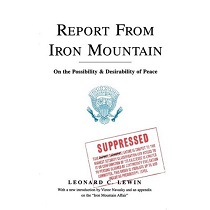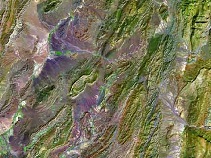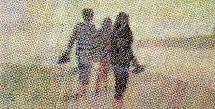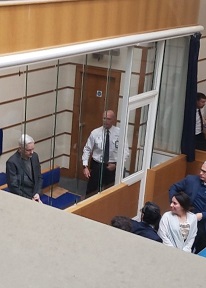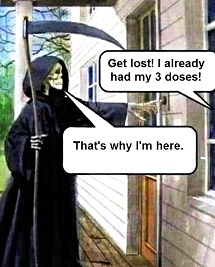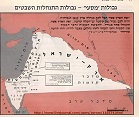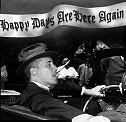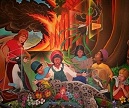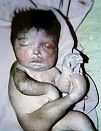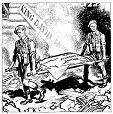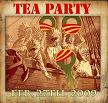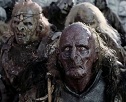Reconstructing Leonora Sansay
for "Another World Is Possible"
Leonora Sansay and her friend and mentor Aaron Burr (Vice President under President Thomas Jefferson) were early 19th century revolutionaries, humanitarians, and iconoclasts in the pure sense: they believed in the intrinsic worth and equality of every individual (African Americans, Native Americans, and Haitians).
Leonora was in Haiti during the 1802-3 black slave uprisings by which they obtained their independence and about which she wrote in her book "Secret History" (Philadelphia, 1808), which she later developed into a full-fledged novel: "Zelica: the Creole" (London, 1820), perhaps the first book by a white American that has a mulatta heroine.
Roger Kennedy shows in his book "Burr, Hamilton, and Jefferson: A Study in Character" (Oxford University Press, 1999) that Burr was an active abolitionist, whose political presence so threatened southern slave owners that they had good reason to take him down, as Jefferson later used Burr's western adventure to do. Kennedy also shows that Burr was a friend to and advocate for Native Americans.
In 1800, Burr and Jefferson tied for the presidency and Jefferson accused Burr of trying to steal the election, but it later came to light that it was Jefferson who made a deal with the opposite party to put himself in office by making certain concessions to them. (See my article on the tie here.) I am not the first to have revealed the fact, but I am the first to have stood up for Burr.
The more we learn about Burr and about those who engineered his downfall, the more clear it is how wrong historians have been.
Leonora was close to Burr and her life and relationship with him says a lot about him and about America, but the focus of this article is limited to her identity and early life. It is an article that sets down a cornerstone of a much larger structure I hope to complete.
♣ ♣ ♣
Leonora Sansay, early American author and friend of Aaron Burr, has become increasingly visible to historians and literary critics, but her real identity has remained obscured. She was a lifelong friend (many claim mistress) of Aaron Burr and a well-known novelist and social commentator of her time. Her early work has remained just within the border of the eye of history, while her later work and her identity have remained just outside of it.
The author of three early American novels, a roman à clef, and one epistolary history/novel, Sansay reveals in her books something both old (via her use of the Old World pre-novel forms of epistolary story and “secret history”) and at the same time utterly new and indescribable: “something in between romance and history.” As for Burr, she was probably as close to him as his daughter and she was the only female other than his daughter who we know was involved in his western adventure, best known as the Burr Conspiracy.1
Her epistolary history of Haiti, Secret History; or, the Horrors of San Domingo, concerned a unique time and place in history: the slave revolt in Haiti which led to the slaves' abolishment of slavery and the establishment of independence on the island. Her book survived the vicissitudes of time in part because of its historical relevance and in part because it claimed to be written in a series of letters to Burr.2
But nobody knows who she really was. Because of a handwritten note on the flyleaf of a copy of an obscure novel in the collection of the Library Company of Philadelphia, Sansay was identified (though not by that name) as the author of both Secret History and that novel, Laura, which she claimed to be autobiographical.3 By the time that information found its way into bibliographies, of course, those who knew her had all died.
Her books were published anonymously. The flyleaf said she was Mary Hassal, daughter of a tavern keeper. Burr's biographer, Matthew L. Davis mysteriously referred to her as “Madame D'Auvergne, but better known as Leonora Sansay, the author of the Horrors of St. Domingo, &c.,” and Burr referred to her by the names D'Auvergne and Clara, which was the name of the heroine in Secret History. A letter from Leonora to Burr that outlined Secret History (and told the story of “Clara's” escapades) was published in the appendix to a 19th century novel about Burr.4
All these names just raised more questions. What were her origins? How did she come to write these books? Why were so many different names associated with her? How did she meet Burr and what was her relationship with him? So it has been for many years. Bibliographers compiled the names and several scholars wrote short biographies of Sansay, but no one seems to have searched local archives to resolve the names or attempt to establish her identity – or if they did, no trace of that work remains.5
This essay remedies that remissness and supplies critical biographical information about Sansay's origins and early life for use by future biographers, literary critics, and historians. Sansay's autobiographical novel, Laura, serves as a framework and guide. She wrote in her preface to Laura: “With the exception of a few slight deviations, which were thought indispensible [sic], the following narrative is a faithful account of real occurrences.”6
In order to strip away well-worn speculation and properly situate Sansay, we have identified and dated nine periods of her life (offering a partial reconstruction of at least four of these, with some discussion of several others), and have included a short disquisition on her books and her relationships with three men: her first boyfriend (“Belfield”), her husband (Louis Sansay), and her mentor (Aaron Burr). This essay does not expect to resolve all the questions about Sansay; it hopes only to provide a foundation for further research.
Sansay's Multiple Identities and Life Periods
When we refer to Sansay's identity, perhaps we should say “identities,” since she seems to have continually re-invented herself. Not only was she Leonora Sansay (Mme. de Sansée), a.k.a. Mme. D'Auvergne, “Mary” (a.k.a. Hassel/Hassal), “Clara,” and even “Nora Haskel”, she was the anonymous author of at least five books. Nobody had all the pieces, for she had split herself so many ways and scattered the evidence so widely that her identity has had slim chance of reconstruction and her achievements even less chance of recognition.
While some of these multiple identities were literary devices and some were adult creations for the sake of secrecy, shifting identities were, for Sansay, something with which she had become familiar from early childhood. If one takes Sansay at her word, it is clear that she experienced numerous drastic twists of fate in her life that forced such different conditions upon her that it was as though she literally lived numerous, vastly different lives in different periods. While Sansay's identities undoubtedly have confused historians and biographers, they may have helped Sansay to see the world from different points of view: a skill most useful to a novelist.
Sansay's life may be divided into nine periods, as follows: (1) her early childhood (ages 1-5) as an only child with her mother (ca.1773-78), (2) her later childhood and adolescence (ages 5-17) as the step-daughter of William Hassal with several half-siblings (ca.1778-93), (3) the period after the loss of her mother before meeting Burr (ca.1790-96), (4) her late adolescence, loss of her lover, and early single motherhood, which included her rescue by and early friendship with Burr (ca.1795-1800), (5) her years (about which we know nothing) as Burr's ward and possibly living in the family of her married sister (these two periods occurred during the early years of the Republic and included Burr's political rise to the vice-presidency)(ca.1795-1800), (6) her marriage to Louis Sansay, departure from the U.S., life in Haiti, Cuba, and Jamaica (spanning Burr's duel with Hamilton and the beginnings of his western project, known as the Burr Conspiracy)(ca.1799-1804), (7) her return to the U.S. and involvement in Burr’s western adventures (1804-08), (8) publication of her first two books, life with Eric Bollman, flower-making and painting, a period she described as “domestic bliss” (these years coincided with Burr's exile in Europe) (ca.1808-12), (9) and her later years (her Philadelphia flower-making factory, European travels, London publication of her later novels – and possible marriage and emigration to England)(ca.1812-?).
After taking a look at Sansay's books, we primarily cover the first four of these periods, which concern Sansay's identity and early years up to her introduction to Burr. We then touch briefly upon her relationship with Burr and marriage to Louis Sansay.
Sansay’s Books
Laura (1809, Philadelphia)
Sansay published the autobiography of her early life, Laura, in 1809. Laura chronicles the author’s early years up to the point of her teen pregnancy and referral to “General S” – clearly Aaron Burr. Laura is discussed further below in the section about her lover and fiancé. We also refer to the novel throughout as we discuss Sansay's biographical record.
Secret History (1808, Philadelphia)
Secret History, or the Horrors of San Domingo was Sansay's first published work, a year before Laura. As noted above, it is the story of Sansay's trip to Haiti with her abusive husband, thus juxtaposing the violence of her white colonist husband with that of the revolting slaves. But the book has come to be seen as much more than just a personal history, travelogue, or roman à clef. Drexler posits that “what makes this novel fit the bill for a starring role in early nineteenth-century American letters” is her ability to “illuminate[] the early republic's 'unknown known'—its political unconscious—with incredible precision. It makes manifest the young republic's dominant but repressed problem: a republic founded on liberty that held a vast population in bondage.” Dillon argues that “the focus of the novel on elite, white domestic relations against the backdrop of warfare over colonial race slavery does not bespeak sustained delusion (or colonial nostalgia) so much as an astute analysis of the relations of production and social reproduction that stand at the core of colonial politics.” Woertendyke says that “Sansay’s conspicuous use of [the old genre of] secret history draws attention to this profound clash between form, space, and time in the New World revolutionary moment of 'St. Domingo,' and to the larger processes of transformation and translation that occur when a genre travels.”7
It would appear that Secret History has made a mark beyond the expectations (but perhaps within the hopes and wishes) of its author. It is clear from her later work that Sansay valued her own insights and intended to comment upon the times in which she lived. But, given her subsequent development as a writer, it is doubtful that Sansay would have regarded Secret History as her best book.8
Zelica, the Creole (1820, London)
Until 1993, Secret History and Laura were thought to be Sansay's only books. Then, Phillip Lapsansky, librarian at the Library Company of Philadelphia, discovered a hitherto unknown work of Sansay's, a three-volume novel titled Zelica, the Creole, published in 1820 in London. Lapsanksy realized Zelica was “a considerably revised and expanded version”of Secret History.” The copy that was purchased by the library included “advertisements noting two additional forthcoming works by the same unnamed author.” The publisher of the three volumes informed prospective readers that the books were by an American named “Mme. de Sansée.”9
While the story of Zelica is essentially the same as Secret History, there are some significant changes. Where in Secret History Clara despises her husband (who is jealous and beats her), in Zelica she adores him. At the end of Secret History, Clara’s husband is dead and she is in Cuba about to return to America; in Zelica, Clara is killed in Haiti. There is also the additional character of Zelica, the Creole, who appears to be intended as a metaphorical anchor to the story. She personifies beauty and suffering (the role Clara had in the original).
Drexler doubts whether Zelica was actually written by Sansay. He notes that it is “the disposition of Clara” that “gives me pause about attributing this novel to Sansay.” He continues:
In Zelica, Clara no longer laments her marriage to St. Louis, who in Secret History is jealous, abusive, and dull. Instead, St. Louis is the gallant. Clara pines for his attention, her attachment to him verges on idolatry. Moreover, in place of the fascinating Caribbean travels featured in the final third of Secret History, Clara is killed!”10
But Sansay's focus in Zelica has shifted from personal story-telling to socio-political novel-writing. By recrafting the actual past into such a novel, Sansay showed her increasing awareness of the significance of both the form and the content of her work, which we now know she continued to develop.
Lapsansky makes a few salient observations on these changes. He observes that Sansay replaced the first-person epistolary voice of Secret History with an omniscient third-person voice “to better capture the thoughts and emotions of the characters.” He notes that thereby “[t]he story is transformed from a nearly journalistic account into a brooding romantic thriller.” Further, Zelica is “a tragic mulatta figure whose racial ambivalence humanizes the bloody chasm between black and white” and Clara, previously merely a coquette, is now “the personification of republican virtue, whose shocking murder by a black revolutionary who lusts for her underscores the growing fear of the black presence in American society.”11
Sansay has thus, in Zelica, made the transition from fictionalized autobiography not only to the novel form but to a novel that is capable of personifying underlying universal values and characters. Such leaps by writers are not made in a vacuum but require substantial mentoring and encouragement.
Scarlet Handkerchief (1823, London) and Stranger in Mexico (n.d, London)
The other books attributed to Sansay are The Scarlet Handkerchief, A Novel, published in 1823, and Stranger in Mexico, no copy of which has been located. Considering Sansay's talent for embodying “the universal” and for engaging in insightful discourse on her times, and considering further that Sansay was at least tangentially involved in Burr's project to revolutionize Mexico, it is much to be hoped that a copy of this book, evidently her last, will turn up.12
Scarlet Handkerchief is the story of what happens to the heroine after her politician uncle's death in a duel. She travels to France, eventually settling in London to make her living as a novelist. Among other subplots, it is also the story of the heroine's unwitting romance-at-a-distance with an unknown admirer (a British lord, whom she ends up marrying). The hidden stream of the progress of that element is one of the most interesting and surprising aspects of the novel. Among other surprising elements are the extensive and revealing dialogues within different social elements: the American upper and lower classes. Sansay exhibits talent at revealing characters through dialogue, while she engages in social satire.
There is much that can be gathered from this story. The heroine is still inclined to impetuosity and generosity, but she is wiser when it comes to men. Perhaps indicative of the effect on Sansay of Burr's fall from grace after his duel with Alexander Hamilton and trial for treason, the heroine in Scarlet Handkerchief suffers greatly from the loss of her uncle. As we discuss below, Sansay was rescued by Burr when she was about 17 and appears to have become a member of his family for some years.
Sansay writes that the death of her heroine's uncle “severed [her] from the only being in the world on whom she had a claim for protection.” She “could hope for no ... favour now” -- “she could no longer move in the brilliant sphere of which she had been the brightest ornament; she would no longer be the centre of the circle where her opinions were laws, her slightest wishes commands; she was no longer the favourite niece of the rich, powerful, and high-souled general Parker.”13
Sansay mirrors these sentiments in an 1808 post-conspiracy, post-trial letter to Burr (who was in exile in Europe): “But here, as in all places, deprived of your protection, I fell like a corps sans a[i]me ... [T]hat support which your unalterable friendship afforded me; on which I leaned in proud defiance of the vicissitudes of fortune, of the caprices of chance, is removed by your absence.”14
The story could point the way to further research on Sansay's life after Burr's political demise. Clearly Burr was in no longer in a position to protect or benefit her or any of his other friends or associates. There has been no history written about the losses experienced by his confederates as a result of Jefferson's prosecution and persecution of Burr. Sansay's work provides a window into that time.
Scarlet Handkerchief takes place right before and following the War of 1812, in France and some in England, where the heroine finally marries. While it is uncertain whether Sansay emigrated to Great Britain, her descriptions of France suggest she did actually spend some time there. If she did go abroad, it appears that she did so about the time Burr returned to the U.S.
Sansay's Birth and Early Years
Having considered Sansay's books, we now turn to local records. Church records show that Leonora Sansay was born Honora Davern on December 11, 1773. She was baptized on February 23, 1774 at St. Joseph's Catholic Church in Philadelphia. Rosa and William Davern were listed as the parents.15
Davern may be the anglicized form of the French noble name D'Auvergne, which Sansay was called by Burr and others. In 1809, Burr referred to “Madame D'Auvergne” and Clara in his journal. Burr's first biographer and editor of his private journal, Matthew L. Davis, identified Clara in a footnote as “Madame D'Auvergne, but better known as Leonora Sansay, author of the Horrors of St. Domingo,” the famous early American architect Benjamin H. Latrobe asked after “M. D'Avergne” in an 1806 letter to a friend in New Orleans.16
However, Sansay writes in Laura that her mother's “father was a wealthy merchant in Dublin” and suggests that William Davern was also from Dublin. Davern is a common Irish name. Thus, Sansay may have frenchified rather than anglicized her birth name. Sansay elsewhere noted her tendency to “write frenchified english.”17
According to Sansay, her parents married in Lisbon (Portugal), where William, when delivering a letter his sister wrote to Rosa, found her languishing in a convent to which her father had sent her “at a very early age.” The two soon fell in love, eloped, and sailed for America, arriving in Philadelphia “after a long and dangerous passage.” However, “[s]carcely were they landed, when William received intelligence of the death of his father” and he set sail for Dublin only three weeks after Sansay was born. Tragically, the ship was lost at sea and Rose was left to raise her daughter alone. Sansay's account is silently corroborated by the lack of further Philadelphia records of William Davern.18
It was not long after William's death that independence and war were declared in Philadelphia. Sansay wrote that Rose's family enjoined her not to write them, William's family refused to recognize the marriage, and Rose made her living by “her own industry” for four years.19
If she stayed in Philadelphia throughout the Revolution, Rose certainly witnessed monumental events: the gathering of representatives from afar for the Committees of Correspondence and Continental Congress – what did she feel when the Declaration of Independence was proclaimed in the streets? -- the threat and confirmation of war to the north, the growing fear that the new American government would be destroyed before it could govern, the approach of British troops, the fleeing of Congress and many of the inhabitants, the arrival of the British and the winter of great feasts and balls with the local society ladies, the departure of the British and return of the American soldiers, by now a real army, parading in the city.
Or perhaps Rosa barely noticed the turmoil, so involved was she in surviving and feeding her bright, vivacious, growing daughter. Sansay writes that Rose's daughter “engrossed her affection.”20
For Sansay, the world was constantly changing. There is reason to believe that, while Sansay's development was disrupted by these events and her sense of security and trust undermined, she was also emotionally and intellectually stimulated by the great goings-on. She absorbed the monumental ideals into her person. The great struggles and powerful beliefs that formed the United States became part of her personality. She continued to play out these struggles in epic form throughout her young adult life and in her writing until she came finally, it seems, to some balance, stability, and contentment through her writing in her maturity.
At any rate, on Valentine's Day in 1779, Sansay's mother, Rose Davern married one William Hassel in the Old Swede's Church on the southern extremity of Philadelphia, a quiet and rural area. Five-year-old Honora or Eleonora Davern now became known as Eleonora or Leonora Hassel. Sansay writes that Rose married Hassel out of “fear of seeing her daughter grow up in poverty and neglect ... while her heart renewed in bitter regret its vows of fidelity to the husband she had lost.”21
William Hassal: Step-Father
Sansay does not reveal in Laura that Rose married William Hassal, who was the owner of the well-known Hassal's Tavern, a frequent meeting place for politicians. It is only later on in the book that Sansay notes she “had been raised from her earliest infancy in the neighborhood of the state-house” which was opposite the tavern. The earliest that William Hassal is listed in local records as “Innkeeper opp[osite] State House” is 1785. According to Sansay, Hassal was “possessed of property,” although it is unclear when he acquired the tavern.22
In 1780, he may not yet have owned the tavern because he apparently made his living as an overseer to the properties of other men. Hassal is listed as having “paid an effective supply tax” of £18 for being the “overs[ee]r to T. Bond” on 1060 acres of property. Hassal also managed another 13,770 acres for Bond, valued at £247.17, another 24,000 acres (valued at £72) for Thomas Gordon, and paid £108 for 6000 acres owned by Elias L. Trichell, one of the well-to-do tax collectors. All of this property was in the “Northern Liberties, West Part” of Philadelphia, an area on the out-skirts of the city. The last year Hassal seems to have paid taxes for others as an overseer was 1783 for Gordon's estate.23
Thomas Bond was a respected and well-known patriot doctor, a city purveyor (city purchaser), one of the original signers of the non-importation agreement, and the founder of the Medical College of Philadelphia, which later was absorbed into the University of Pennsylvania. Hassal's association with Bond indicates that his politics were patriotic, that is, allied with the fledgling American cause. In 1782, he became “Clerk Purveyor” for the Hospital Department of the 13th Pennsylvania Regiment in the Continental Army (under Thomas Bond, Purveyor), but not until 1784 do we find him on a muster roll for the militia, as a “matross” or private. By that time, the war had ended.24
The first company Hassal joined was a sort of elite corps of working class men of good social standing. Their names turn up in local government. But Hassal did not stay long with this group. In the same year, he evidently moved to another company, the 4th Company Artillery Battalion, a group of less prominent names. Since military affiliations reflected social status at that time as much as political affiliations, we may infer from this change that Hassal did not quite belong – either by his choice or theirs – to the somewhat exclusive class of prominent locals. However, artillery battalions may also have been viewed as elite because men serving in such battalions were likely chosen for their excellent marksmanship, which was highly valued. But riflemen were not politicians.
In 1786, Hassal switched to the 5th Company Artillery Battalion Militia under Lt. Col. Thomas Mifflin, where he stayed through the following year, the last year we find him listed on the rolls, and the year the United States Constitution came into effect. The move to serve under Mifflin, a renowned revolutionary officer, probably indicates an enhancement or at least recognition of Hassal's military and social standing.25
Hassal also seems to have had some experience dealing with Native Americans, for on December 20, 1790, the Supreme Executive Council of Philadelphia voted to award him £50 “towards defraying the expenses of the Cornplanter and his companions, Chiefs and Warriors of the Seneca Nation of Indians who are now in this city for which sum ... Hassal is to be accountable.”26
Siblings
Through this time, other things were happening for the Hassals. Children were arriving so that by the 1790 census, “Wm Hassell, Innkeeper” had listed in his household one “Free white males of 14 years and upwards, including heads of families,” one “Free white males under 16,” and seven “Free white females including heads of family.” No non-free (slave) persons were listed, but there was one “Other free persons” listed, perhaps a boarder.27
Sansay was the eldest, having been born before the Hassal's marriage. Next came a half-sister: Mary, born November 12, 1781. This is the sister to whom Sansay seems to have been closest, for she adopted her name in writing Secret History, and in both her books, a sister plays an important role. After this came a brother: William, born December 24, 1783.28
These are the only confirmed birth records for children of William and Rose Hassal. That the Hassal's had only three (surviving) children (Leonora, Mary, and William) is circumstantially corroborated by the administration of William's estate after his death, which lists the purchase by the executors of three pairs of shoes for the children.29
The 1790 Census lists ten family members (7 females, 2 males, and one other free person). The other members were probably boarders.30
Hassal: Tavern Keeper and a Man of Property
Hassal may not have been “possessed of property” when Rose married him, but he did acquire property later. In July of 1784, Hassal received a land grant of 400 acres in Berks County, Pennsylvania. Rose received 200 acres of her own a month later. The following year, Hassal received another 400 acres in Washington County.31
It is doubtful that they ever lived on this land (and neither property seems to have been retained by the time of their deaths), for from 1782 through 1792 Hassal held a liquor license “to retail Spiritous Liquors in the Houses within the City, where [he] now respectively dwell[s].” Hassal renewed his license, as required, every year through 1792.32
By 1789, different licenses began to be given for different kinds of “houses.” Hassal was listed as a tavern keeper, but not as an innkeeper. By 1790, the licenses were divided into “Inns, Taverns, Beer Houses and Persons Licensed . . . to sell spirits, Beer or Cyder or to keep public Houses,” and Hassal was “recommended” as a tavern keeper.33
Hassal must have run an orderly and decent tavern, for we do not see him turn up in the prosecutions against those who were a “Nuisance by keeping a privy House etc.,” or for having “riots” in his tavern. Indeed, his tavern evidently was a popular meeting place for “assemblymen, Governors, and public officers, with judges ... whose business took them to the State House” directly across from which it was located.34
The tavern, according to local history, was originally built in 1690 by a man named Clark. Over the years, it came to be known under various names: Clark's Inn, The Half Moon, or The Sign of the Half Moon, the Coach & Horses, the State House Tavern, and, of course, Hassal's Tavern (or Inn), variously spelled.35
According to Scharf, taverns in those days, although they “accommodated guests with bed and board, had more of the character of a drinking-house.” Scharf continues:
The inn was rural in origin, the tavern originated in the city, and was frequented not merely by topers and revelers, but by quiet citizens, bachelors having no fireside of their own, and men of family who went there to meet neighbors and discuss business or the news, while enjoying a quiet glass and pipe.36
In his diary, Jacob Hiltzheimer, a prominent Philadelphia citizen, mentions Hassal's tavern. On November 8, 1787, he writes that in the, “Forenoon [I] attended as usual at the State House ... At five o'clock I met again the Grand Committee, and at seven o'clock fifteen of the members [met] at Hassall's Tavern, to name the Delegates for Congress to be elected tomorrow.” On September 25, 1788, Hiltzheimer writes, “In the evening about 25 members met at Hassell's Tavern to consult on the selection of two Senators to represent this State.”37
Hassal's Tavern seems to have been adequately but simply furnished. The inventory of Hassal's “Goods and Chattles” taken after his death includes a number of simple wooden chairs and tables, evidently for the public rooms, a backgammon table and “fixtures for the tap room.” Seven complete beds are listed, three of them feather beds and one a “cat tail” bed. Other bedsteads, including one “corded” and one “small field mahogony” bedstead brought the total of working beds to eleven, excluding a “matrass” and two old bottoms. Given the number of beds and the number of household members listed in the 1790 Census (10 people), it seems that Hassal did not accommodate overnight guests; rather he may simply have had long-term boarders. This is corroborated by mention of rent payments to Hassal's estate from at least two tenants, one of whom, a Mrs. Bruce, paid for “2 years ground rent.”38
Other interesting items in the household included “6 pictures (Generals),” three scripture pictures, one English bible and one “Doway” bible, Johnson's Dictionary and 27 other books, one bird cage, two guns, a horse, “a summer house with parcel of old Seats,” one Arm easy chair and “a pewter pot for the easy chair,” and “a Cane Silver mounted.” The greatest number of items were, not surprisingly, wares for the kitchen, which seems to have been well-provided.39
Hassal did retain other property. His estate notes a “house at Southwark.” Taxes were paid, repairs made on the house, and cash paid out for “ground rent of lots.” It is unclear what happened to this property or why it wasn't sold to support Hassal's children after his death.40
Mother and Daughter: Holy Visions
This was the environment in which Sansay passed through childhood into adolescence. But her exposure to these public officers was probably limited. She attended school at John Brady's or Mrs. Sloop's during the day, and took long walks alone with her mother, with whom she seems to have spent most of her free time. Her mother, whose “piety had been increased by affliction” was, according to Sansay, “[s]hocked by the misfortunes that had attended her entrance into society, and disgusted by the mode in which she continued to exist,” which caused her to cherish “the secret wish of sending her daughter to the convent of Santa Clara, and of devoting her to that religious solitude from which she herself had so thoughtlessly fled.” Sansay claims that she “entered readily into the holy visions of her mother.”41
Sansay notes that “[o]f the world she knew nothing but what she had learned from books.” She had lived in “seclusion” growing up and that “the seclusion in which she had lived rendered any improper intercourse highly improbable.” Her boyfriend, Belfield, discussing a “house of doubtful character” which had become a “den of infamy”(that is, a whorehouse), tells her that “the singular seclusion in which you have lived, while it has incredibly preserved your purity of mind, has kept you totally unacquainted with the affairs of the world, and the interests that govern mankind.”42
It seems unlikely then that Sansay associated with politicians who frequented the tavern. Nor is it likely, for this reason, that Sansay met or became acquainted (or involved) with Aaron Burr during this time, as some local historians have claimed. Moreover, the view that Sansay met Burr at the tavern is contradicted by Sansay's own account (see section on Burr below).43
In 1787, Rose became a regular member of St. Mary's Roman Catholic Church (also known as “the Old Roman Church”) in Philadelphia. That year, she shared rental of pew number 28 with William Hussey. Hassal's social standing was less than eminent, but Rose managed to obtain a seat in the main gallery only five seats from the front and next to Hussey, one of the men who was one of the original titleholders to the property on which the church was built.44
Rose's attendance at St. Mary's confirms Sansay's observations about Rose's religious ideals. A view of what service was like at that church was provided by John Adams. He attended service there (which he called “the Mother Church, or the Grandmother”) in 1774 and wrote that in St. Mary's church “is every Thing which can lay hold of the Ear, and Imagination. Every Thing which can charm and bewitch the simple and ignorant. I wonder how Luther ever broke the spell?” Adams wrote to his wife that the sermon was “a good, short, moral Essay upon the Duty of Parents to their Children, founded in Justice and Charity, to take care of their Interests temporal and spiritual.” He continued:
This Afternoons Entertainment was to me, most awful and affecting. The poor Wretches, fingering their Beads, chanting Latin, not a word of which they understood, their Pater Nosters and Ave Marias. Their holy Water – their Crossing themselves perpetually – their Bowing to the Name of Jesus, wherever they hear it – their Bowings and Kneelings, and Genuflections before the Altar. The Dress of the Priest was rich with Lace – his Pulpit was Velvet and Gold. The Altar Piece was very rich – little Images and Crucifixes about – Wax Candles lighted up. But how shall I describe the Picture of our Saviour in a Frame of Marble over the Altar of full Length upon the Cross, in the Agonies, and the Blood dropping and streaming from his Wounds.
The Musick consisting of an organ, and a Choir of singers, went all the Afternoon, excepting sermon Time, and the Assembly chanted – most sweetly and exquisitely.45
Another testament to Rose's close involvement with the church, compared to William's, was that when she died, she was interred for free, a privilege reserved only for the original subscribers (and their families) and the “worthy poor.” William, on the other hand, had to pay to be interred.46
Family, Death, Marriage, Birth
William Hassal's origins are almost as much of a mystery as Sansay's but there is not room in this essay to address that issue at length. There were many Hassals in Philadelphia but the records do not connect this William with the others. The main line of Hassals in Philadelphia were from Barbados. The best known Hassal, Samuel, was a prominent public official in the early half of the 18th century and was active in Christ Church. Samuel's brother, William (of Barbados), made his will in 1754 when he was, he said, about to return to Barbados, ostensibly to retire for the rest of his days. He mentions one Margaret Settle of Barbados to whom he bequeaths an annuity. If this woman had born him a child out of wedlock, it might explain our unconnected William.
William the tavern keeper's separateness is an interesting fact, in itself, especially when coupled with what we know of Rose and Sansay. Everyone in Sansay's immediate family were without connection They were tossed around (or even drowned) in a sea with no anchor, abandoned, disregarded, avoided, forgotten, lost or dead, yet none of the living gave up trying to make something of their lives. Sansay, however, was the only one to succeed in becoming something significantly beyond her origins. Her obstacles -- and her accomplishments -- are easier to understand when set in this context. That her names have garnered attention through the years by biographers and survived through today attests to Sansay's extraordinary resilience and achievement.
Rose Hassal died and was interred on November 4, 1790 in the New Chapel Burying Ground of St. Mary's Church. Sansay wrote that the “delicacy of Rosina's constitution had not been able to resist the sorrow which preyed on her mind, and her health, which had been long on the decline, yielded to a sudden attack.” Sansay, who wrote in Laura that she “had just entered her fifteenth year” when her mother died, was in fact a month shy of 17.47
William had rented the pew for Rose, starting in December 1789, but he did not keep up his payments very well, for he is listed under “Outstanding Debts” in June 1790 and again in December 1790, a month after Rose's death, when he then paid “in full 3 doll[ar]s.” He is not listed thereafter.48
The children Rose bore him, to whom she “performed, with the strictest attention, all the duties of a mother,” are difficult to locate. Of all the Hassals in the records, two of them do not seem to connect to any of the other Hassal families, so may belong to William and Rose: Mary Louisa Hassall, who married Thomas W. Duffield at Christ's Church on April 16, 1801, and Elizabeth Hassell, who married William Powell at the same place on September 11, 1793. However, Rose and William's daughter was christened just Mary, not Mary Louisa and Rose and William were not members of Christ Church – Samuel Hassal was.49
Sansay wrote that her step-father had arranged a marriage for her when he knew he was about to die. Hassal had contracted “a confirmed consumption” (tuberculosis) and died on the very day her marriage was scheduled to take place. He was interred on September 4, 1793. She did not marry the man, but relocated to “the habitation of a respectable farmer” where her lover, Belfield, “had engaged lodgings” for her.50
Despite the fact that the Hassals had acquired property, as we saw earlier, none of this property was listed in the administration of William's estate. The only mention of property was taxes paid on the house at Southwark. Again, it is unclear why this property was not sold to benefit the children or pay debts. The estate owed slightly more than £413 after administration. In fact, £21 and 15 shillings were paid for a “[f]rame and stable included in the Inventory [but] not the property belonging to the Estate.” The estate, which was inventoried within two weeks of William's death, was not settled until 1796.51
Sansay wrote that she was “informed by her relatives that she had no other protection to expect than that of the gentleman who had been approved of by her father.” The indebted condition of William's estate seems to confirm this. The tavern was demolished a few years after Hassal's death.52
Lover and Fiancé
To this point, we have dealt with Sansay's early life, her childhood and early adolescence -- her life before she reached womanhood. Now we come upon her entry into adulthood, about which we have only Sansay's description to inform us.
Laura is the story of the fall of a young woman, on the advent of womanhood, into love, out of her family and acceptable society, and into the “delusive tranquility” of an illicit relationship where “she forgot, in the presence of the man she adored, that a step however apparently harmless, if incorrect, leads invariably to ruin and destruction.” Sansay's first adult relationship with a man is of some importance, considering she has been accused for more than a century and a half of having been Burr's mistress, but there is space here to touch only briefly upon this.53
Laura meets George Belfield immediately some time after her mother's death, when Laura is in deep mourning, knowing no “soothing voice of sympathy [to] alleviate her sorrows; for she knew no heart with which her own could claim kindred.” Laura is found by Belfield during “her lonely wanderings on the banks of the Schuylkill” River. At “that perilous stage of female existence” when a young woman is most susceptible to male attention and at a time when “her heart was desolated by grief,” Laura “found one gentle being who listened to her with sympathy and soothed her by tender attention.” Laura “loved [and] she was loved.”54
We do not know who Belfield really was or what his real name was. A search of local records turned up no leads. That he existed is corroborated by Sansay's references in Secret History to “the friend of her youth” for whom she “sighs continuously ... and seems to exist only in the recollection of past happiness” and to the death of “him who had taught me to feel all the transports of passion, and for whose loss I felt all its despair.”55
It is unclear how long Sansay knew Belfield before a “young Englishman, whom business brought frequently to her step-father's house ... requested permission to visit her, which was readily granted, and after a few interviews asked her for his wife,” at which proposal her step-father, dying of consumption, “rejoiced,” but, according to Sansay, “[h]er acquaintance with Belfield was unknown.” She “did not dare to plead a prior attachment” or to “resist the will of a dying father,” but when the wedding date was set and she related “the unfortunate occurrence” to Belfield, he “swore that he would not suffer her to be disposed of against her inclination” and determined to find her safe lodgings elsewhere. Yet, on the very day she was supposed to marry, her step-father died and Sansay, free but “without friends, without resource, had no alternative between marrying a man whom she loved not at all ... or flying to the protection of him, whom she loved with all her soul.” She moved to “a small farm-house on the heights near Germantown which border on the Wissahickon,” where Belfield, who was studying medicine in Philadelphia, visited in the afternoons.56
Eventually “love's last tribute was demanded.” Laura became pregnant. After many difficult episodes in which Belfield and Laura are torn apart then reunited, Belfield accepts a challenge to a duel to protect her reputation, which he himself had sullied. On the day they are to be married, Belfield dies in the duel, leaving Laura showing “visible approaches to maternity”. Sansay writes that “[s]he became a mother, -- She found protection from the gentleman whom Belfield had recommended her, and who discerned her worth amid the shades of the deepest affliction” -- e.g., Burr.57
By the time of Belfield's death, Sansay was staying with a friend of her mother's in Philadelphia. In 1796, “Hassel, Eleonora, gentlewoman” resided at 207 Race Street. She is not listed for previous or subsequent years.58
More research needs to be done to discover Belfield's identity. Sansay says he was engaged in studying medicine with a Philadelphia physician who “was one of the very few who fled not from their post in the hour of danger” when yellow fever struck that year. Dr. Benjamin Rush was the leading physician in Philadelphia and the first chair of medicine at the University of Pennsylvania in 1791 and he was known for his dedication during the yellow fever epidemics. However, without further research there is no way to determine whether Belfield studied with Rush – or whether Belfield studied medicine at all.59
The year (or more) of Sansay's sojourn with Belfield and the year of his death are uncertain, but they were likely between 1793 (the year of her step-father's death) and 1796 (her listing in the city directory). (See Appendix for chronology.)
Her relationship with Belfield began some time following her mother's death in November 1790 – perhaps the spring or summer of 1791 or 1792. (Sansay gives no indication of the time span or the season, but their courtship appears to have taken place in warmer months as both appear to have spent much of their outside.) Sansay would have been seventeen years old throughout most of 1791; Belfield met Laura, according to Sansay, when he was twenty. If the difference in age is literal, Belfield would have been born around 1770 and died in 1794, 1795, or 1796. Without knowing his real last name, it is difficult to search records for his birth or death. There was a Dr. Samuel Duffield who was a contemporary and colleague of Dr. Rush and, as we noted earlier, a Mary Louisa Hassall married Thomas W. Duffield on April 16, 1801, but this may be nothing more than coincidence.60
Burr
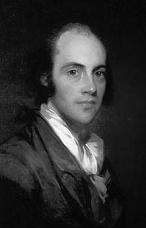
This rudimentary reconstruction of Sansay's life points to one last issue: her relationship with Burr. Again, there is not space here to do more than touch on it and raise a few points. According to Sansay, she became acquainted with Burr through Belfield's letter on the eve of his duel “recommending” her to Burr. Sansay wrote:
... Belfield wrote a letter to a General S---, of New York, a man related to his family, in whose house he had passed much of his time, when a boy, ---of high standing in society, affluent, singularly liberal, possessed of the most distinguished talents, and whose career would have been brilliant, had the great qualities of his mind suited the country in which he was born---to his protection, he recommended Laura and his child.61
Sansay's Secret History, her references to Burr as her friend and mentor, Burr's letters to his daughter and son-in-law which mention Sansay and in one of which he refers to himself as her mentor, indicate a unique relationship that needs further exploration. Despite the reputation assigned to Burr for two centuries, Burr had many close friendships with women that were not sexual.62
After the death of both Burr's parents and his maternal grandparents, Burr was raised by his mother's youngest brother, and grew up as close to his cousins (one of whom became his best friend: Matthew Ogden) as to his aunts and uncles (one of whom, Pierpont Edwards, became a political colleague).
The family Burr later created around himself, then, during his marriage and after his wife's death in 1794, included many others: those he befriended or parented, those he rescued and rehabilitated or otherwise assisted (like Natalie de Lage (Sumter)), those he mentored, and those he patronized (including most visibly and productively the talented painter, John Vanderlyn).
The continuing belief that Sansay had an affair with Burr appears to have arisen substantially from several letters written by the man she married half a decade after the birth of her child: Louis Sansay, a French merchant in New York City who had property in Haiti. The letters from Louis show an extremely -- almost rabidly – jealous, illiterate, and emotionally disturbed man, terrified that he would lose his wife (Louis Sansay, Letters). The tone and content of these letters depict a classic abusive husband. Clearly uneducated compared to his wife, he likely felt emasculated and awed by her. While her social standing may have been as humble as his (or, put another way, his standing as a merchant was equal to hers as the daughter of a tavern keeper), her intelligence and talent made him look boorish and stupid.63
More importantly, however, Louis' jealousy is not proof of his wife's impropriety. It is only proof of his character, confirming Sansay's depiction of him in Secret History as abusive toward her. It is an error of logic to conclude that because Sansay's husband was jealous, she must have done the thing his jealousy suggests she did.64
Conclusion
Local Philadelphia records corroborate Sansay's autobiographical writings, rendering her “novels” more useful to those interested in understanding her life. While the veracity or accuracy of Sansay's accounts and characterizations should not provide the exclusive basis for establishing further biographical details of her life, her books may nonetheless provide a foundation for further research and a framework for assessing her accomplishments and relationships.
Many years ago, when I began research on Sansay's life and I informed an acquaintance of my pursuit, he responded “But who cares?” That question has now been answered by the interest of many others who have admired her, written about her work, and wondered about her life. Because of her double value as both novelist/commentator and friend of Burr, the rewards of studying her are also doubled. She not only reveals much about herself and her time, but can shed new light on one of the most enigmatic of our early leaders.
___________________________________________________________________________________

Jennifer Van Bergen is an author, educator, and environmentalist currently living in Gainesville, Florida, where she teaches English and Law at Sante Fe College. Van Bergen is a former faculty member of the New School University in NYC, where she taught a course in the Writing Program that she eventually developed into her book Archetypes for Writers: Using the Power of Your Subconscious. Van Bergen is also the author of The Twilight of Democracy: The Bush Plan for America. She has also published several scholarly law articles, including one on the 1801 electoral tie between Thomas Jefferson and Aaron Burr, that can be found here.
___________________________________________________________________________________
Footnotes
[1] Gretchen Woertendyke, “Romance to Novel: A Secret History,” Narrative 17, no. 3 (2009), 267;Thomas Perkins Abernethy, The Burr Conspiracy (New York, 1954) 270.
[2] [Leonora Sansay] Secret History; or, The Horrors of St. Domingo, rep. in Secret History; or, The Horrors of St. Domingo and Laura, ed., Michael J Drexler (1808; Peterborough, Ontario, 2007).
[3] “This Book was Written by Mis Hassal her Father kept the sign of the ½ Moon opposite the State House. She had a sister who married one of the [West] Indians on a visit here in 1791. She went with them but I believe was never heard from thereafter.” John Cox, Flyleaf Inscription, [Leonora Sansay] Laura (Philadelphia: Bradford & Inskeep, 1809) copy in Library Company of Philadelphia. The inscription contains some inaccuracies. It was her marriage, not her sister's, and it took place closer to 1800. Her trip to Haiti was in 1802-4.
[4] Burr, Aaron. Private Journal, ed. Matthew L. Davis, (2 vols., 1838; rep. Upper Saddle River, N.J., 1970), 1:149, 146; Charles Burdett, Margaret Moncrieffe; the First Love of Aaron Burr (New York, 1860), 428-37, rep. in Sansay, Secret History, 223-31.
[5] Wright wrote that Louis Aguilar Eyre and Susanne Webb were writing a biographical sketch of Sansay but I have found nothing by them. Louis H. Wright, American Fiction: 1774-1850 (Pasadena: Huntington Library, 1939), 172. Kline found the letters from Sansay's husband, but otherwise adds little. Mary-Jo Kline, Political Correspondence and Public Papers of Aaron Burr (Princeton: Princeton University Press, 1984), 2:703. Lapsansky wrote a sketch and discussion of her later novel, Zelica. Lapsansky correctly identifies the year of her step-father's death and notes her involvement in the Burr Conspiracy, but cites no sources and contains no further biographical information. Phillip Lapsansky, “Afro-Americana: Rediscovering Leonora Sansay,” Annual Report of the Library Company of Philadelphia for the Year 1992 (Philadelphia: Library Company of Philadelphia, 1993), 29-46. Isenberg includes a sketch of Sansay and her relationship with Burr. She relies on Lapsansky. Nancy Isenberg, Fallen Founder: The Life of Aaron Burr (New York: Viking/Penguin. 2007), 239-41. Drexler followed Kline in his article, “Brigands and Nuns.” Michael J. Drexler, “Brigands and Nuns: The Vernacular Sociology of Collectivity after the Haitian Revolution.” American Historical Review 109, no. 2 (2004): ___. In his introduction to his reprint of Sansay's first two books, Drexler reviews Sansay's early life briefly , citing Burr's memoirs and journal, city directories, and Lapsansky. Sansay, Secret History, 27. Drexler also includes a useful chronology. Id. 38-54. Vietto speculates about William Eustis's interest in her, based on a 1798 letter from him to Burr. She may have gotten the speculative association via Kline, Political Correspondence, 1:317n. Angela Vietto, "Leonora Sansay," American Women Prose Writers to 1820 , eds. Carla Mulford, Angela Vietto, and Amy E. Winans, Dictionary of Literary Biography ,Vol. 200 (Detroit: Gale Research, 1999).
[6] [Leonora Sansay], Laura, rep. in Secret History; or, The Horrors of St. Domingo and Laura, ed., Michael J Drexler (1809; Peterborough, Ontario, 2007), 156.
[7] Michael J. Drexler, “The Displacement of the American Novel: Imagining Aaron Burr and Haiti in Leonora Sansay's Secret History,” Common-Place 9 (April 2009), para. 6; Elizabeth Maddock Dillon, “The Secret History of the Early American Novel: Leonora Sansay and Revolution in Saint Domingue,” Novel 40 (Fall 2006), 78; Woertendyke, “Romance to Novel,” 257.
[8] In Laura, Sansay remarks about the “creative genius” and “brilliant coruscations” of Laura's mind. Sansay, Laura 182, 172. In Scarlet Handkerchief, the heroine “surprised and charmed those who listened to her ceaseless flow of wit, her elegant observations, and her just and appropriate remarks.” Sansay, Scarlet Handkerchief 246. The young man who is interested in her says: “The road to celebrity is steep and rude, but I think that you were formed for great occasions and energetic exertions...” Ibid., 257.
[9] Lapsansky, “Afro-Americana,” 29; “Quarterly List of New Publications: March 1821,” The Edinburgh Review, or Critical Journal 35 (March 1821 – July 1821) (Edinburgh, 1821), 266; Peter Garside, The English Novel, 1800–1829 , Update 4 (June 2003–August 2004) (Centre for Editorial and Intertextual Research), 1820:12; 1823:12; [Leonora Sansay], Zelica, the Creole (3 vols., London, 1820).
[10] Sansay, Secret History, 36.
[11] Lapsanksy, “Afro-Americana,” 35.
[12] [Leonora Sansay], The Scarlet Handkerchief (3 vols., London, 1823); [Leonora Sansay], The Stranger in Mexico, (3 vols., London, n.d.). (No known extant copy; may never have been published.)
[13] Sansay, Scarlet Handkerchief, 267, 268-69.
[14] The phrase “corps san ame” could be “corps sans aime” (body without love) or “corps sans amie” (body without a friend). “Y.Z.” to Aaron Burr, Nov. 6, 1808, Burr, Private Journal, 1:78. The initials “Y.Z.” are Davis's transcription and are likely inaccurate. (The original is not extant.) That this letter is from Sansay is confirmed by her reference to [Bollman's] illness and to her return from New Orleans, and several letters from Bollman to Burr paralleling her information. Erich Bollman to Aaron Burr, Aug. 11, 1808, ibid., 1:29-30; Bollman to Burr, Nov. 12, 1808, ibid., 1:84. That she was in New Orleans with Bollman is independently confirmed by the testimony of Lt. Robert T. Spence at the trial of Aaron Burr, reported in the Richmond Enquirer (and not in the published trial transcripts), who refers to her as “Madame D'Auvergne, alias Nora Haskel” and stated that he sailed to New Orleans with her and two of Burr's confederates: Eric Bollman and James Alexander. Abernethy, Burr Conspiracy 270. See also Zachariah Poulson, Poulson's American Daily Advertiser (Philadelphia: 1800-1839), July 27, 1808 (“Arrived this morning, the ship Clara, [Captain] Farrell, 19 days from New Orleans. Passengers, Dr. Bollman and several others.”).
[15] “Register of Baptisms of St. Joseph's Church, Philadelphia, 1758-1775,” Records of the American Catholic Historical Society (9 vols., Philadelphia, 1884-86), 1:335.
[16] Burr, Private Journal, 1:146, 149; Benjamin H. Latrobe, The Correspondence and Miscellaneous Papers of Benjamin Henry Latrobe, eds. John C. Van Horne and Lee W. Formwalt, Papers Of Benjamin Henry Latrobe Series, Series 4, 1805-1810. (New Haven, 1987), 2:259.
[17] Sansay, Laura 158, 160; Sansay, Secret History, 231. It is possible that “D'Auvergne” was used by Sansay during the enterprise in order to protect her identity.
[18] Sansay, Laura ,157-58, 160.
[19] Ibid., 161, 160.
[20] Sansay, Laura, 161.
[21] “Marriage Record of the Swede's Church (Gloria Dei), 1750-1810,” Pennsylvania Archives, 2d ser., eds. John B. Linn and William H. Egle (Harrisburg, 1878), 8:395; Sansay, Laura, 161. A picture of Old Swede's Church may be found in Thomas J. Scharf and Thompson Wescott, History of Philadelphia: 1609-1884 (Philadelphia, 1884), 2:1234. History of the church is at ibid., 2:1229.
[22] Sansay, Laura, 186, 187, 160; Francis White, The Philadelphia Directory, (Philadelphia, 1785).
[23] “Effective Supply Tax, City of Philadelphia, 1780, from Philadelphia 1780 tax lists,” Pennsylvania Archives, 3d ser., ed. William H. Egle (Harrisburg, 1894), 15:88, 225, 493; 16:294, 822. Hassal's name is spelled Wm. Hazel and Wm. Hassell in these entries.
[24] Scharf, History of Philadelphia, 1:273-74, 239; 2:1580; “Pay-Roll of the Hospital Department, Continental Army, 1782,” Pennsylvania Archives, 5th ser., ed. Thomas Lynch Montgomery (Harrisburg, 1906), 3:729 (William Hazel, commencement of pay Jan. 1, 1782); “Militia Rolls: 1783-1790,” Pennsylvania Archives, 6th Ser., ed. Thomas Lynch Montgomery (Harrisburg, 1907), 3:1004 (William Hassall, private, 1784); 3:1234 (Wm. Hassel, Chestnut Ward, private, 1784); 3:1248 (Wm. Hassell, Chestnut, matross, 1785).
[25] “Militia Rolls: 1783-1790,” 3:1259 (Wm. Hassel, opposite State House, matross, 1786), 3:1268 (Wm. Hassel, 5th Co. Art. Bat. Phila. Militia under Lt. Col. Tho. Mifflin, Esq., 1787).
[26] “Minutes of the Supreme Executive Council of Pennsylvania” Pennsylvania Archives, Colonial Records Series,(Harrisburg, 1853), 16:547.
[27] “Heads of Families at the First Census of the United States in the Year 1790 Pennsylvania” U.S. Dept. of Commerce & Labor, Bureau of the Census (Washington,1908), 225.
[28] “List of Baptisms registered at St. Joseph's Church, Philadelphia (Third Series) From October 23, 1781 to July 30, 1786,” Records of the American Catholic Historical Society, (Philadelphia, 1883), 4:38 (baptism & birth record for Mary Hassell, of William and Rose Hassell); 4:55 (baptism & birth record for William Hassall, of William & Rose Hassall).
[29] William Hassall, “The Estate of William Hassall,” Register of Wills. (Philadelphia: City Hall, Settlement July 11, 1796), Bk. I, 338. (Within the administration, Hassal's name is spelled variantly. The outside fold by which the administration was originally filed reads “Hassel.” The fold for the inventory reads “Hassell,” but the accounting reads “Hassall.”)
[30] “Heads of Families at the First Census,” 225.
[31] Sansay, Laura, 160; “Warrantees of Land, County of Berks: 1752-1890,” Pennsylvania Archives, 3d Ser., ed. William H. Egle (Harrisburg, 1894), 26:272 (William Hassel, July 21, 1784, 400 acres; Rose Hassell, August 18, 1784, 200 acres); “Warrantees of Land, County of Washington: 1784-1892,” Pennsylvania Archives, 2d Ser., ed. William H. Egle (Harrisburg, 1894), 26:565 (William Hassall, March 24, 1785, 400 acres).
[32] “County Tax Assessment Ledgers: 1779-1783,” (Philadelphia: Philadelphia City Archives): 36 (Oct. 1782, Wm Hassel), 105 (Oct. 1783, William Hassell), 178 (July 1784, Wm Hassell), 253 (July 1785, Wm Hassel), 47 (June 1789, William Hassell), 183 (June 1790, Tavernkeeper William Hassall, Chestnut St. opp. St. Hs.), 284 (June 1791, Wm Hassel), 32 (June 1792, Wm Hassell, Chestnut St. No. 185). Oct. 1779-Apr. 1782, Hassel not listed; end 1785-beg. 1789, volumes missing.
[33] “County Tax Assessment Ledgers,” 47.
[34] “County Tax Assessment Ledgers” 35 (June 1789); Scharf, History of Philadelphia, 2:982 (engraving); Robert E. Graham, “Taverns of Colonial Philadelphia,” Transactions of the American Philosophical Society, New Series, 43/1 (Philadelphia, 1953), 319.
[35] Scharf, History of Philadelphia, 2:982.
[36] Ibid., 2:981.
[37] Extracts from the Diary of Jacob Hiltzheimer of Philadelphia: 1765-1798, ed. Jacob Cox Parsons (Philadelphia, 1893), 137, 146. Note that the index lists Samuel Hassel. This is incorrect. Samuel Hassel, the elder, died in 1751 and the younger never owned a tavern. See discussion on William Hassel's relatives below.
[38] Hassal, “Estate.”
[39] Ibid.
[40] Ibid.
[41] Ibid. (teachers names are listed with payments made to them “for schooling”); Sansay, Laura, 186, 161,162.
[42] Sansay, Laura, 171, 163, 174, 203.
[43] Ibid., 217; Sansay, Secret History, 79; Maxwell Struthers Burt, Philadelphia: Holy Experiment (New York, 1947), 237; Graham, “Taverns of Colonial Philadelphia,” 319. See also John F. Watson, Annals of Philadelphia, Being a Collection of Memoirs, Anecdotes, & Incidents of the City and its Inhabitants (Philadelphia, 1830), 350 (Norah Hassell “passing fair”).
[44] “Pew Register of St. Mary's Church, Philadelphia, Pa. From 1787-1791,” ed. Thomas C. Middleton, Records of the American Catholic Historical Society (Philadelphia, 1894), 5:360, 381; “Interments in St. Mary's Burying Ground, Philadelphia, From 1788 to 1800,” ed. Thomas C. Middleton, Records of the American Catholic Historical Society, (Philadelphia, 1894), 5:25. (Reverend Middleton writes in his introduction to St. Mary's interment records: “This book has served a double purpose ; in the front part of it were entered the names of the pew holders of the church; in the reversed part the interments in the graveyard.” “Interments,” 19.)
[45] John Adams to Abigail Adams, Oct. 9, 1774, The Book of Abigail and John, eds. L.H. Butterfield, Mark Friendlaender, and Mary-Jo Kline (Lebanon, NH, 2002), 79.
[46] “Interments,” 32, 33, 43, 53.
[47] Ibid., 43; Sansay, Laura, 162, 163.
[48] “Interments,” 377, 380, 381.
[49] Sansay, Laura, 161; “Marriage Record of Christ Church, Philadelphia. 1709-1806” Pennsylvania Archives, 2d Ser., eds. John B. Linn and William H. Egle (Harrisburg, 1878), 8:118.
[50] “Interments,” 53; Sansay, Laura, 172, 173, 174.
[51] Hassal, “Estate.”
[52] Sansay, Laura, 173. Elizabeth Drinker says it was demolished in 1796, but by 1795, the tavern was no longer listed in the city directory. Graham, “Taverns of Colonial Philadelphia,” 319.
[53] Sansay, Laura, 174.
[54] Ibid., 163, 167-68, 174.
[55] Sansay, Secret History, 63, 79. “The friend of her youth” is not the same person as “her friend” whose “society ... gave a charm to her life” or “the friend who had been charged with Clara from her infancy.” Id. We can be sure that the latter two both refer to Burr, as Sansay notes that the friend advised her to marry Louis (corroborated by the so-called Burdett letter from Sansay to Burr: Sansay, Secret History, 227: “this husband she owes to you”) and rescued her after Belfield's death. Id.
[56] Sansay, Laura, 172-76.
[57] Ibid. 176, 204, 210, 212-17, 221, 219, 222.
[58] Ibid. 209; Thomas Stephens, Stephens's Philadelphia Directory for 1796 (Philadelphia, 1796).
[59] Sansay, Laura , 177; John Osborne and James Gerencser, Benjamin Rush (1745-1813) (Their Own Words, 2003)
[60] “Marriage Record of Christ Church,” 118.
[61] Sansay, Laura ,217. See footnote 55 for references to Burr in Secret History.
[62] Burr to Theodosia Alston, July 10, 1804, Memoirs of Aaron Burr, ed. Matthew L. Davis (1837; 2 vols., New York, 1971), 2:323; Burr to Joseph Alston, July 10, 1804, Ibid., 2:326; Sansay to Burr, May 6, 1803, Sansay, Secret History, 231.
[63] Louis Sansay to Burr, Mar. 18, 1802, Mar. 22, 1802, Mar. 29, 1802, Apr. 2, 1802, Kline's speculative identification of Sansay as the subject of AB's bawdy letter to Eustis has probably contributed to the continuation of the myth of the Sansay/Burr affair. Burr to William Eustis, July 16, 1797, Kline, Political Correspondence, 1:317n. (“You have excited my curiosity to an extreme – How could such an Animal be Months in my Vicinty & I not even hear of her?”)
[64] In a court of law, such testimony would be viewed as hearsay and as character evidence and would, with good reason, be inadmissible to prove any action or intention on the part of the subject of the testimony. Historians, biographers, and literary critics, of course, are not required to adhere to legal rules of evidence. However, the basis of their conclusions ought to adhere to the rules of logic, which would similarly require something more than mere reliance on a jealous husband's innuendos. Barring that, such conclusions ought at the very least to be substantiated before they are repeated as fact.
827; ♣
Illustrations: The portrait is "A Woman and her Son" by John Vanderlyn, 1800. We know Vanderlyn did a portrait of LS but it does not seem to be extant. She also did have a child but we know nothing about it.
Portrait of Aaron Burr, attributed to Gilbert Stuart. Oil on canvas, c. 1792-1794. NJHS# 1854.1. Gift of David A. Hayes, Esq. for John Chetwood, Esq. [http://www.jerseyhistory.org/news_detail.php?recid=68]

